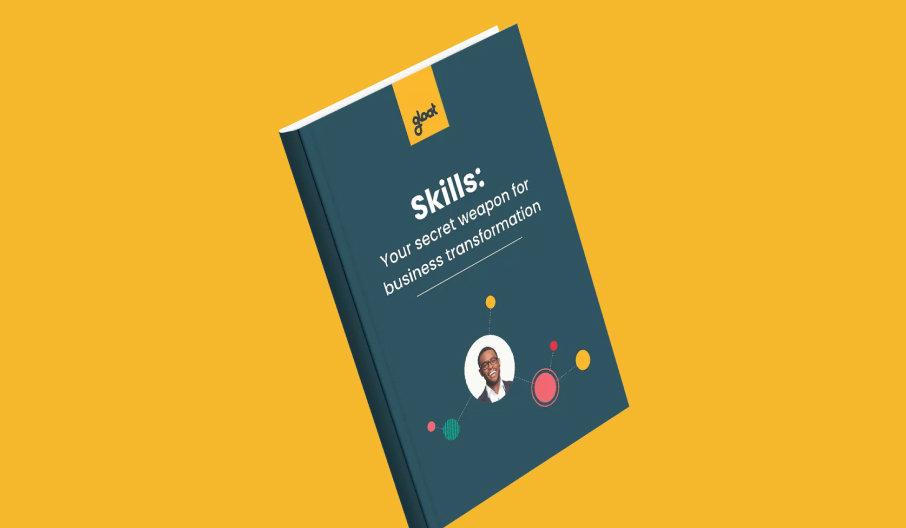Skills measurement: what is it and why does it matter?
Uncovering your workforce’s full potential starts with measuring their skills

Uncovering your workforce’s full potential starts with measuring their skills
The accelerating pace of digital innovation creates plenty of opportunities—and lots of uncertainty. According to Deloitte, two out of three business executives acknowledge that they’re struggling to keep up with constantly changing skills requirements and just 10% of HR leaders are confident that they can effectively anticipate the skills they’ll need over the next three years.
Now that 98% of businesses are striving to transform into skills-based organizations, developing in-demand capabilities is rising to the top of every leader’s agenda. However, as executives raise the bar for upskilling and reskilling initiatives, they can’t overlook a crucial element of their transformation: skills measurement.
Without an accurate understanding of proficiency levels and workforce capabilities, leaders won’t be able to tap into all of the expertise their people have to offer. Fortunately, there are a few best practices that executives can harness to ensure their skills measurement approach is setting everyone up for success.
What is skills measurement?
Skills measurement defines the processes that organizations undergo to gain a more comprehensive understanding of the knowledge that employees possess. When assessing technical skills, leaders need insight into the level of expertise a given worker has. For example, a hiring manager who’s looking for a skilled developer must be able to differentiate between a coding novice and a colleague who’s fluent in multiple programming languages.
Traditionally, most skills measurement information has come from employees performing self-reports and manager feedback. While both of these methods provide useful insights on workforce skills, they’re also subjective—how one manager chooses to rate an employee’s Excel proficiency may differ from the grade or score another supervisor would give it.
Rather than relying on reporting that’s potentially biased, skills measurement processes are evolving to become more data-focused. Instead of asking employees to complete an assessment—or in addition to it—companies are now collecting data from employees’ previous professional experiences to accurately and reliably measure their skills.
Why should organizations measure employees’ skills?
While organizations that measure skills have always had an advantage over their competitors, assessing capabilities is becoming non-negotiable in the new world of work. As technology continues to advance and the half-life of skills shrinks, leaders must possess an in-depth understanding of their workforce’s capabilities so they can decide which skill-building initiatives to prioritize.
Additionally, executives need insight into the skills that are most essential for every open project and role to ensure they’re building and hiring for the right competencies. And since skills needs are dynamic and ever-changing, managers must be able to adjust the competencies required for a given project or role as needs change over time.
Organizations that fail to accurately assess their employees’ skills risk losing sight of some of their workforce’s capabilities. Similarly, companies that don’t track the skills that are essential for open roles will struggle to build talent pools with the expertise they’re looking for.
What are the benefits of skills measurement?
Leaders and employees agree on the importance of measuring skills, especially when it comes to performance reviews. 73% of workers are in favor of utilizing skills as a way to evaluate performance and 75% of managers share this sentiment.
Beyond serving as an effective tool for assessing performance, organizations must measure their workforce’s capabilities to effectively adopt skills-based operating models. Businesses that successfully deploy skills to tasks and projects at enterprise-scale enjoy several game-changing advantages. Deloitte research shows that skills-based organizations are 107% more likely to place talent effectively, 52% more likely to innovate, and 47% more likely to cultivate an inclusive environment.
5 best practices for measuring employees’ skills
Given the benefits that skill-based organizations reap, many companies are eager to take their measurement processes to the next level.
#1. Look beyond an employee’s job scope
The COVID-19 pandemic demonstrated an overarching truth that managers need to keep in mind today: all employees are capable of so much more than what they were hired to do. While many leaders recognize their workers’ potential, a lack of skills visibility often hinders them from taking full advantage of it.
Rather than letting employees’ expertise go underutilized, leading companies are harnessing Skills Foundation to gain a bird’s eye view of all the skills their people possess. This tool also includes insight into the market value of a job and pinpoint which skills are on the rise and which are declining.
#2. Don’t forget to factor recency into the equation
Now that the half-life for technical skills is just 2.5 years, leaders must consider how up-to-date an employee’s knowledge is when evaluating their skills. A worker who did video editing a decade ago doesn’t have comparable expertise to someone who produces videos now and keeps up with all of the latest editing innovations. Skills Foundation uses an algorithm that takes into account both years of experience and how long ago an employee executed a specific skill to accurately assess capabilities.
#3. Encourage employees and managers to share their input
Assessing skills shouldn’t be an entirely top-down process; it’s also an opportunity for employees and managers to discuss the competencies that workers should prioritize next. Rather than just having an employee evaluate their skills or asking a manager to do it, it’s best to have both perspectives so leaders can compare them side-by-side. This also opens the door for meaningful career coaching conversations about what a worker’s next steps should be and the skills they will need to prioritize to achieve their goals.
#4. Empower employees to keep expanding their skill sets
All too often, a lack of transparency around skills and career development holds employees back from reaching their professional goals. One in four workers acknowledges that they don’t know what skills are required to progress or get promoted. To empower employees to turn their career dreams into realities, leaders must set quantifiable goals that outline the capabilities they must hone and the opportunities that will help them bridge existing skill gaps.
Companies that are committed to taking skill-building efforts one step further can turn to development tools to eliminate the bottlenecks that often hinder employees from accessing training resources. Gloat’s Opportunity Hub centralizes all volunteering, learning, training, and wellbeing resources so that employees can spend less time searching for these opportunities and more time building their skills.
#5. Leverage new technologies to minimize bias
While self-reporting and manager feedback are powerful skills measurement tools, neither of these processes tells the whole story when it comes to an employee’s capabilities. Since any individual reviewer’s skills evaluation will be subjective, leaders need a baseline for evaluating workforce capabilities that isn’t swayed by bias. That’s why companies are harnessing a new generation of AI-powered tools that can enhance understanding through inferred proficiencies to supplement subjective ratings with analysis generated based on broader market, industry, and company knowledge.
To learn more about what it takes to accurately evaluate the capabilities within your workforce, check out our guide, Skills: your secret weapon for business transformation.





